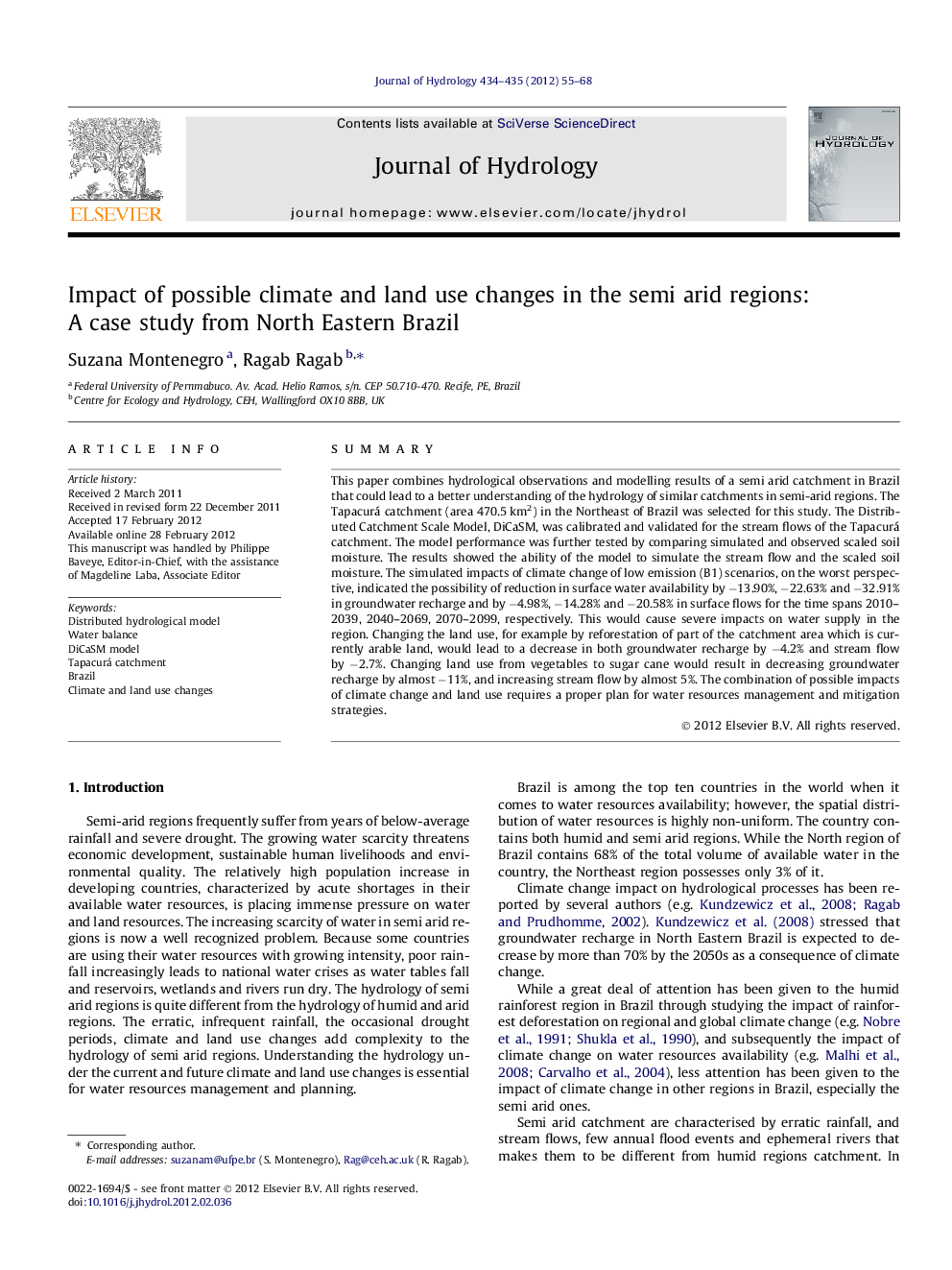| Article ID | Journal | Published Year | Pages | File Type |
|---|---|---|---|---|
| 4577012 | Journal of Hydrology | 2012 | 14 Pages |
SummaryThis paper combines hydrological observations and modelling results of a semi arid catchment in Brazil that could lead to a better understanding of the hydrology of similar catchments in semi-arid regions. The Tapacurá catchment (area 470.5 km2) in the Northeast of Brazil was selected for this study. The Distributed Catchment Scale Model, DiCaSM, was calibrated and validated for the stream flows of the Tapacurá catchment. The model performance was further tested by comparing simulated and observed scaled soil moisture. The results showed the ability of the model to simulate the stream flow and the scaled soil moisture. The simulated impacts of climate change of low emission (B1) scenarios, on the worst perspective, indicated the possibility of reduction in surface water availability by −13.90%, −22.63% and −32.91% in groundwater recharge and by −4.98%, −14.28% and −20.58% in surface flows for the time spans 2010–2039, 2040–2069, 2070–2099, respectively. This would cause severe impacts on water supply in the region. Changing the land use, for example by reforestation of part of the catchment area which is currently arable land, would lead to a decrease in both groundwater recharge by −4.2% and stream flow by −2.7%. Changing land use from vegetables to sugar cane would result in decreasing groundwater recharge by almost −11%, and increasing stream flow by almost 5%. The combination of possible impacts of climate change and land use requires a proper plan for water resources management and mitigation strategies.
► Climate change low emission scenario for 2010–2039, 2040–2069, 2070–2099, was applied. ► Future climate change impact would significantly reduce water resources availability. ► The reduction ranges from 13.9% to 32.9% in groundwater and 5% to 20.6% in surface water. ► Changing land use from vegetables to sugarcane decreases groundwater recharge by 11%. ► Climate and land use changes impact require new water resources management strategies.
